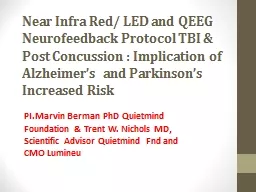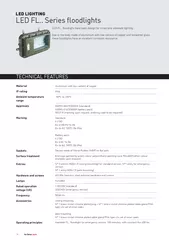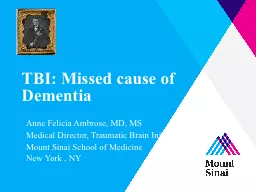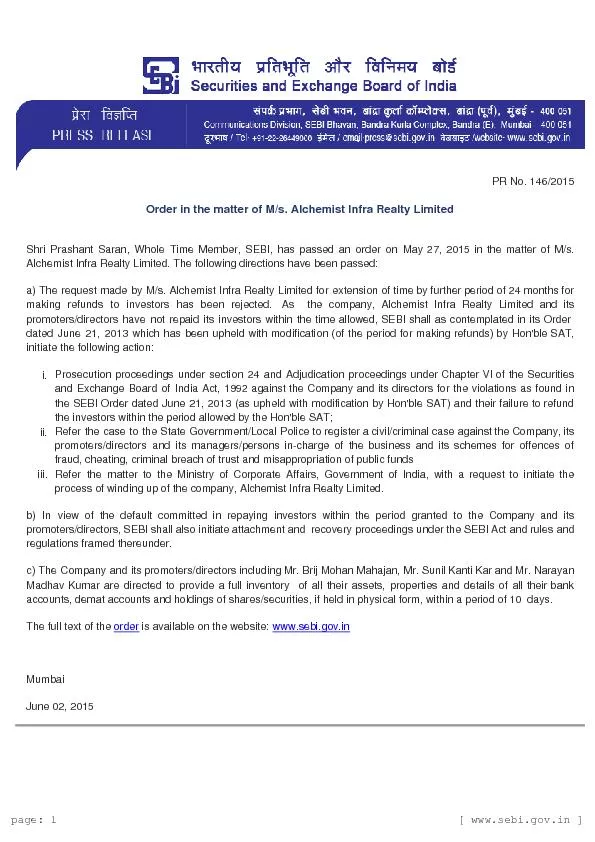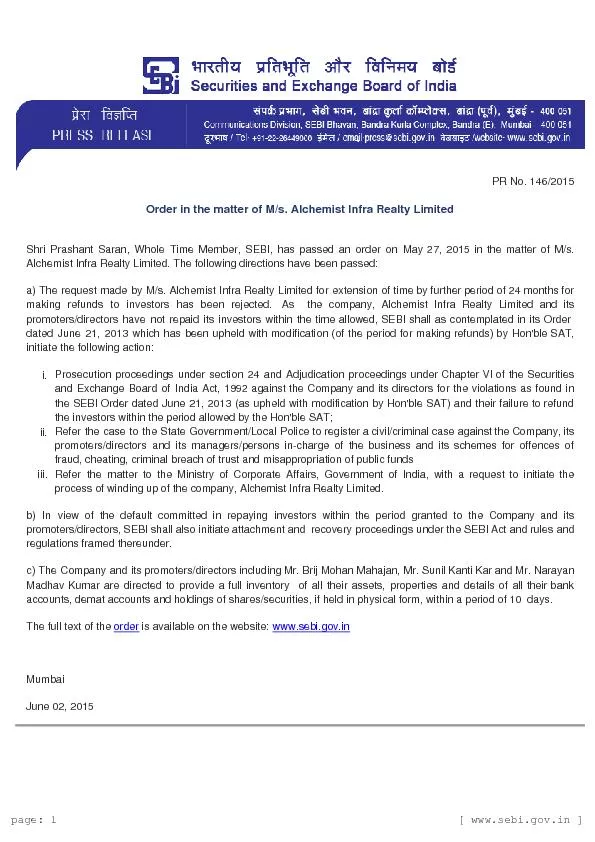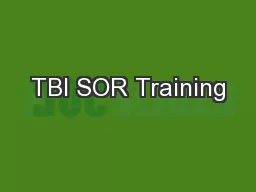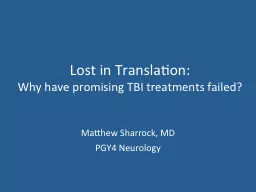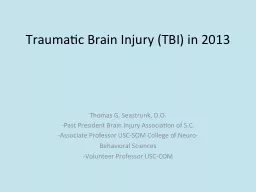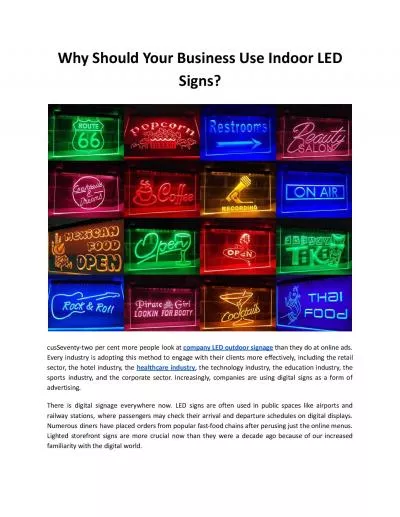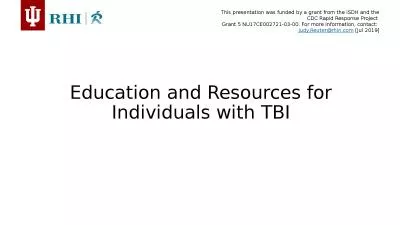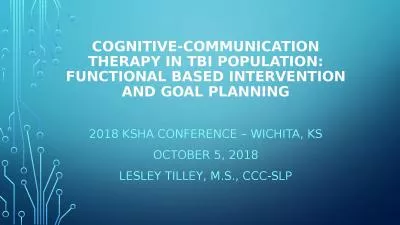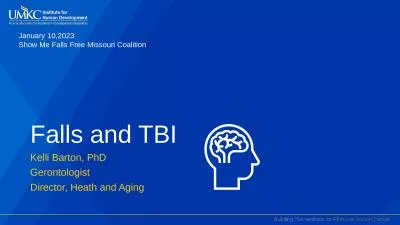PPT-Near Infra Red/ LED and QEEG Neurofeedback Protocol TBI
Author : alida-meadow | Published Date : 2019-11-23
Near Infra Red LED and QEEG Neurofeedback Protocol TBI amp Post Concussion Implication of Alzheimers and Parkinsons Increased Risk PIMarvin Berman PhD Quietmind
Presentation Embed Code
Download Presentation
Download Presentation The PPT/PDF document "Near Infra Red/ LED and QEEG Neurofeedb..." is the property of its rightful owner. Permission is granted to download and print the materials on this website for personal, non-commercial use only, and to display it on your personal computer provided you do not modify the materials and that you retain all copyright notices contained in the materials. By downloading content from our website, you accept the terms of this agreement.
Near Infra Red/ LED and QEEG Neurofeedback Protocol TBI: Transcript
Download Rules Of Document
"Near Infra Red/ LED and QEEG Neurofeedback Protocol TBI"The content belongs to its owner. You may download and print it for personal use, without modification, and keep all copyright notices. By downloading, you agree to these terms.
Related Documents

